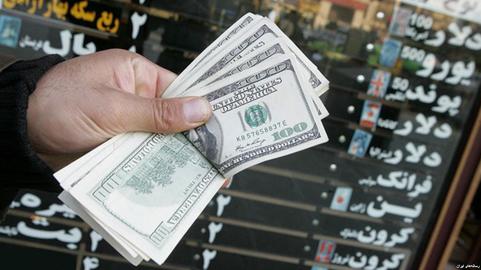On Sunday, July 29, the Iranian rial (IRR) lost one-ninth of its value against other currencies — the latest in a series of freefalls that began early this year. Many Iranians are stupefied, but the simple fact is the accumulated cost of economic mismanagement and corruption has pushed the national currency over the edge.
When the country's currency began to lose its value, many attributed it to President Trump’s threat to leave the Joint Comprehensive Plan of Action (JCPOA), and then to his later decision to pull out of it and to implement unilateral sanctions against Iran. As the deadline approaches for US sanctions to be reimposed, the value of the rial continues to plummet even further. So many people still see a correlation with President Trump’s decision and believe it is the main cause of havoc in Iranian currency markets.
But Iranians, always known for their love of conspiracy theories, have other explanations as well. Some believe the US government is disrupting the currency market in an attempt to undermine Iran and as a preamble to a military attack against Iran. Others accuse President Rouhani’s administration of devaluing the rial so it can sell its currency reserves at a greater price in order to pay for cash subsidies and settle public employees’ payroll. Rouhani’s political opponents charge that the government is pushing for an agreement with President Trump and creating chaos in the currency market so people will accept any sort of deal for the sake of the economy.
But the truth is far more horrifying.
Iran’s economy has become extremely vulnerable; even small shifts can create massive responses in Iran ’s markets. Most analysts agree that part of the blame for the rial’s freefall can be attributed to the conduct of Iranian petrochemical firms. These semi-private businesses receive massive amounts of dollars in export revenues. The firms were supposed to sell their hard currency at the official rate of 42,000 IRR per US dollar to facilitate the import of officially-licensed necessities and commodities. But they failed to do so. Instead, their executives used the market rate of 95,000 IRR per dollar to benefit personally or to bring in more cash for their companies. Currency exchange networks have also suffered an increase in demand for currency as Hajj begins and thousands travel to Saudi Arabia, causing disruption to the supply line. And of course, there are others seeking to profit from the shifting movements in the market too.
But none of these factors warrant a 16 percent decrease in the national currency of an economy of a country with a population of more than 80 million and dozens of trading partners. The only conclusion can be is that there are hidden accumulated costs in Iran’s economy that make its markets vulnerable.
First, there's a certain irony in blaming petrochemical companies, whose investors are often public organizations or government-run entities. Their executives are selected from those people who are trusted and loyal to the political establishment, and yet the very same people have scuffled President Rouhani’s currency policy. Even their loyalty is not translated into letting others profit from a 50 percent gap between the official exchange rate and the market exchange rate. Those who believe in a command-and-control approach to the economy must bear in mind that in Iran, the government can issue edicts, but not even enterprises associated with the government feel obligated to follow them.
No Political Will for Change
The Iranian government tries unsuccessfully to demonstrate its competence by controlling the currency market. However, its incompetence becomes more evident when it comes to matters of governance and combating corruption. As its ability to govern and to coordinate its over-extended institutions diminish, the markets take account of the increased risk by devaluing the national currency even further.
In truth, Iran's economy depends on the currency earned from oil and petrochemical exports. The government took the decision to distribute the currency among businesses, organizations and even individuals, based on nominal rates. This approach has ignored the foundation and the rationale for currency exchange, limiting the role of the market to an environment that generates profit by receiving government-distributed dollars or euros. Those who enjoy the government’s favor make billions by reselling their allocated hard currency. It is baffling that, after 40 years and several economic episodes of similar proportion, no Iranian government has mastered the political will to change this system. The time might have arrived for an officially-accepted currency market in Iran as the Iranian rial loses its value.
This will be a tall order though. Various interest groups are invested in maintaining the current system, which rewards their loyalty to the political system so handsomely. They benefit from the fact that Iran’s ruling class has not updated either its views or its economic planning for 40 years. They do not want to accept the harm that rent-seeking behavior causes, or their role in encouraging its existence within Iran’s economy. Their rigid mindset has promoted a passive approach from the government, which makes President Rouhani’s administration appear lost and confused as it faces the unfolding crisis.
Today, perhaps because of government incompetence, Iranians are asking more questions about the economy than they have done in the past. They are also challenging perceptions of society overall. Many believe the declining social capital and brain drain have made the economy weaker and brought on this government incompetence. They are demanding to know if Iran’s economy will soon be hit by a full-blown earthquake. And they make these demands with full comprehension — and genuine fear — of its dramatic consequences.
visit the accountability section
In this section of Iran Wire, you can contact the officials and launch your campaign for various problems

























comments